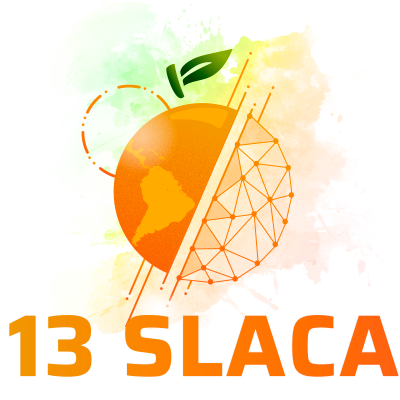Anais do Simpósio Latino Americano de Ciências de Alimentos
Anais do 13º Simpósio Latino Americano de Ciência de Alimentos
TRYPSIN IMMOBILIZATION ON PASSION FRUIT STALK CELLULOSE FIBERS AND ITS APPLICATION IN THE HYDROLYSIS OF RICE BRAN PROTEIN CONCENTRATE
Como citar esse trabalho?
Para citar este trabalho use um dos padrões abaixo:
Como citar esse trabalho?
Catalysis by enzymes offers several advantages over traditional chemical catalysis. For example high catalytic power, high specificity for the substrate, mild conditions of temperature, pH and pressure. However, separation of the enzyme from the medium of reaction for its reuse is no possible. Immobilization converts enzymes into insoluble forms, allowing their recovering and subsequent application. This work aimed to immobilize trypsin on cellulose fibers extracted from passion fruit stalks, to apply it in the hydrolysis of rice bran protein concentrate (RBPC). In order to obtain the cellulose fibers, passion fruit stalks were submitted to pulping, bleaching and drying processes. Fibers were activated with glycidol and glutaraldehyde-ethylenediamine. The immobilization system that obtained the highest yield and presented the best enzymatic activity retention and operational stability was system activated with glycidol, it was obtained 49.98%, 63.91%, and 78.6%, respectively. Then, the system activated with glycidol was chosen to conduct the hydrolysis of RBPC. Good cycle stability can be attributed to multi-point bonds on the surface of trypsin molecules, which prevents enzyme autolysis and denaturation. Rice bran was subjected to fat extraction and protein solubilization and precipitation to obtain RBPC. Protein concentration obtained was 44%. RBPC hydrolysis was carried out at 37°C and pH 8 for 4 h using the trypsin immobilized at a ratio of 1:100 enzyme:substrate (w/w). Free trypsin experiments were conducted as reference. The free trypsin HD was 7.95%. The reaction was monitored by determining the degree of hydrolysis (HD). The relatively low HD can be attributed to the fact that RBPC is a matrix composed of substances other than protein. The last cycle performed with immobilized trypsin obtained a relative HD of 27.4%. Even though it is a promising technique, this result shows that optimization studies should be performed in order to hydrolysis system will be more efficient.
- 1 Universidad Nacional de Colombia
- 2 Universidade Estadual de Campinas
- 3 Universidade Federal do Tocantins
- 4 Universidade do Minho
- 6. Bioquímica e Biotecnologia de Alimentos (BB)
Discussões Científicas de Qualidade
Com ~200 mil publicações revisadas por pesquisadores do mundo todo, o Galoá impulsiona cientistas na descoberta de pesquisas de ponta por meio de nossa plataforma indexada.
Confira nossos produtos e como podemos ajudá-lo a dar mais alcance para sua pesquisa:
Como citar esse proceedings?
Esse proceedings é identificado por um DOI , para usar em citações ou referências bibliográficas. Atenção: este não é um DOI para o jornal e, como tal, não pode ser usado em Lattes para identificar um trabalho específico.
Verifique o link "Como citar" na página do trabalho, para ver como citar corretamente o artigo

